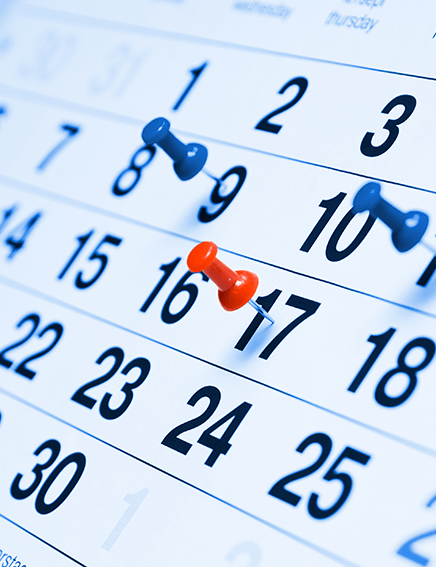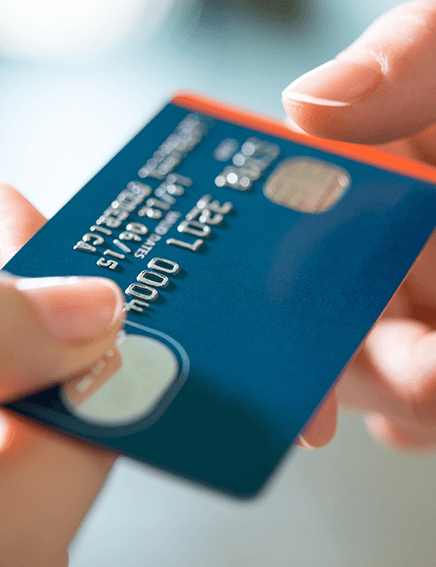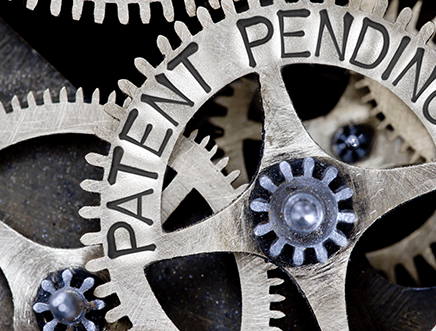What Can Be Protected?
U.S. design patents are a great tool to protect the unique external look of just about any tangible and physical product.
Look around you. The tangible and physical things you see are things that likely could be protected by a U.S. design patent, at least when such things were new.Here are some examples of things sometimes protected by U.S. design patents …
External Vehicle Parts
Jewelry
Furniture
Exercise Equipment
Footwear
Games
Toys
Appliances
Tools
Utensils
Cookware
Electronic Hardware Devices
If your product you want to protect is not listed above, contact us and inquire whether it might be appropriate for protection via a U.S. design patent.What about non-tangible and non-physicals like software? U.S. design patents can protect the look and feel of graphical user interfaces (GUIs) and animations. But design patents will not protect the way the software functions and works, that is the realm of utility patents.
Benefits
First, as soon as a U.S. design patent application is filed, the applicant is entitled to note that the product is now “U.S. Patent Pending.” That alone can be a marketing advantage and have more value than the costs to prepare and file the U.S. design patent application. And as long as the filed U.S. patent application remains pending, the applicant is entitled to make that claim of U.S. Patent Pending.
Also, as noted, a U.S. design patent in the case of tangible and physical products protects the exterior look of the product.
Specifically the U.S. design patent allows the patent owner the optional right to exclude others from making, selling, offering to sell, using, and/or importing a substantially similar looking product as compared against what is shown in the drawings of the U.S. design patent.
And presently, U.S. design patents provide such rights to the patent owner for 15 years from the date that the U.S. patent issues. A 15 year monopoly to control your market can be a tremendous advantage.
Thus obtaining a U.S. design patent can provide you with a powerful tool to police and stop infringers and copycatters, particularly on popular sales platforms like Amazon, eBay, etsy, and the like
Sometimes you may have to file a patent infringement lawsuit to really enforce such rights.
Current design patent law permits the patent owner to recover profits that the infringer obtained from selling the infringing product. Additionally, you may be able to get an injunction in the form of a court order that requires the infringer to stop infringing.

Timelines

There are two main timelines to consider …
The time it takes to prepare and file a given U.S. design patent application. And then once filed, how long does the pending U.S. patent application typically remain pending. We have prepared and filed U.S. design patent applications in as little as one day; however, the typical turnaround time is two to three days (business days) from the time we receive adequate source materials from you. For example, by adequate source materials we prefer a copy of the 3D digital model of the product; such as in a .step type of file format. Other examples of source materials might be a series photos of your product or other drawings of your product. Essentially the source materials you provide need to show the product from every viewing angle – so we can then prepare the proper drawings.
Then once filed, presently on average, a pending U.S. design patent application will sit idle at the Patent Office for about 14 months until a first substantive communication is received, such as an Office Action. Not all U.S. design patent applications receive an Office Action. Similarly, U.S. design patent applications on average remain pending for about 19.4 months. That means that on average after 19.4 months, the filed U.S. design patent application will issue into a U.S. design patent application or be deemed abandoned. It is also possible to pay an additional fee at the Patent Office to speed up this average timeline with a goal of completing examination within 12 months. And the current overall allowance rate for U.S. design patent applications is 85%. (This data from USPTO’s Design Data Patents Dashboard, last check on November 11, 2016.)
Costs
We charge a flat (fixed) rate of $640 per U.S. design patent application, which includes our patent attorney fee and the cost to prepare up to seven (7) professional design patent
illustration views.
The design of some products may require more than the seven (7) standard drawing views. For example, if the product may have more than one operational configuration, then more views may be needed to show those other operational configurations. In any event, if more than seven (7) views may be needed, then our fee will be greater than $640. We will discuss all this with you before charging any fees.
Our rate of $640 does NOT include the USPTO filing fees. Presently, the USPTO filing fees are typically either $190 (for micro-entities) or $380 (for small entities). We can assist you with
determining if you are a micro-entity, small entity, or an un-discounted entity. And the USPTO filing fees may change from time to time.

What We Need
In order for us to begin preparing a U.S. design patent application we need two types of info and payment. For payment we will need payment of our fee of at least $640 and payment of the applicable USPTO fee. As for the two types of info …
As for the two types of info …
The first type of info, is the inventor and/or applicant’s details and contact info.
The second type of info is adequate source materials that would permit us to prepare the professional patent illustration views. Much of the time we will be preparing a minimum of seven (7) different views, such as the six standard orthogonal views of front, back, top, bottom, left, and right; and then at least one perspective (isometric) view.
The preferred source material is a copy of 3D digital model file for the product, such as in a .step file format. Less preferred, but often adequate, are a series of photos of the product, showing the product from all angles.
If there is a delay in getting us adequate source materials, then that will delay us in preparing the necessary patent illustration drawings and hence a delay in filing the U.S. design patent application.
What You Get

Once we have what we need, we will prepare and file a U.S. design patent application for you. That filing will typically include a written patent specification (with the one and the only permitted claim), the professionally prepared patent illustrations, and several filing forms, such as, an inventor’s declaration (signed by the inventor), a power of attorney form, an Application Data Sheet (ADS) form; and possibly other forms, such as, but not limited to, an Information Disclosure Statement (IDS), assignment docs, and the like.
And remember, once filed the applicant is entitled to note that the product shown in the filed U.S. design patent application is now “U.S. Patent Pending.”
Other Considerations
- 1
Patent attorney Eric Kelly is a USPTO registered patent attorney, registration number 70302. You may independently verify this.
- 2
The legal practice of drafting, preparing, counseling, and prosecuting patent applications before the Patent Office (USPTO) is a “federal” matter and thus any USPTO registered patent attorney or USPTO registered patent agent may represent your interests before the USPTO irrespective of where they are located or you are located. For example, we have clients all over the world, all over the United States, and of course throughout California where we are located.
- 3
We cannot and do not guarantee that any filed U.S. design patent application will mature into a U.S. design patent.
- 4
If your product has been on sale or otherwise publically available or publicly disclosed for more than one year then you may NOT obtain any type of U.S. patent, including a U.S. design patent. This is known as a “statutory bar.”
- 5
If the way your product looks is not new or is obvious, then your design may NOT be patentable. Only designs that are novel, non-obvious, and ornamental are patentable.
- 6
Once a U.S. design patent application is filed and is pending, you have an affirmative duty to provide the Patent Office (USPTO) info on preexisting similar designs – i.e., what we call “prior art.”
- 7
After a U.S. design patent application is filed, that application may receive one or more “Office Actions” from the Patent Office (USPTO). Office Actions require a timely response to avoid abandonment of the filed U.S. design patent application. Responding to an Office Action will generally entail additional patent attorney fees. Note, you are NOT bound to use us for responding to any Office Action; and many filed U.S. design patent applications never receive any Office Action.
- 8
Within six months of filing a U.S. design patent application, an applicant may have a Hague Agreement application filed, seeking to register the design in other
countries that are members to the Hague Agreement. That is, with proper timing and additional costs, you may leverage your U.S. design patent application filing into a filing that may extend design protection into other countries. What we call “design patents” in the U.S. are often known as “industrial design registrations” in many other countries.
Contact Us
And note we are a full service intellectual property (IP) law firm, providing legal services addressing patents, trademarks, copyrights, trade secrets, and much more.
